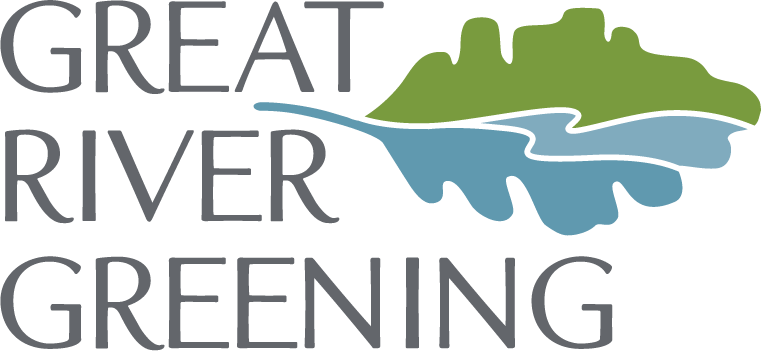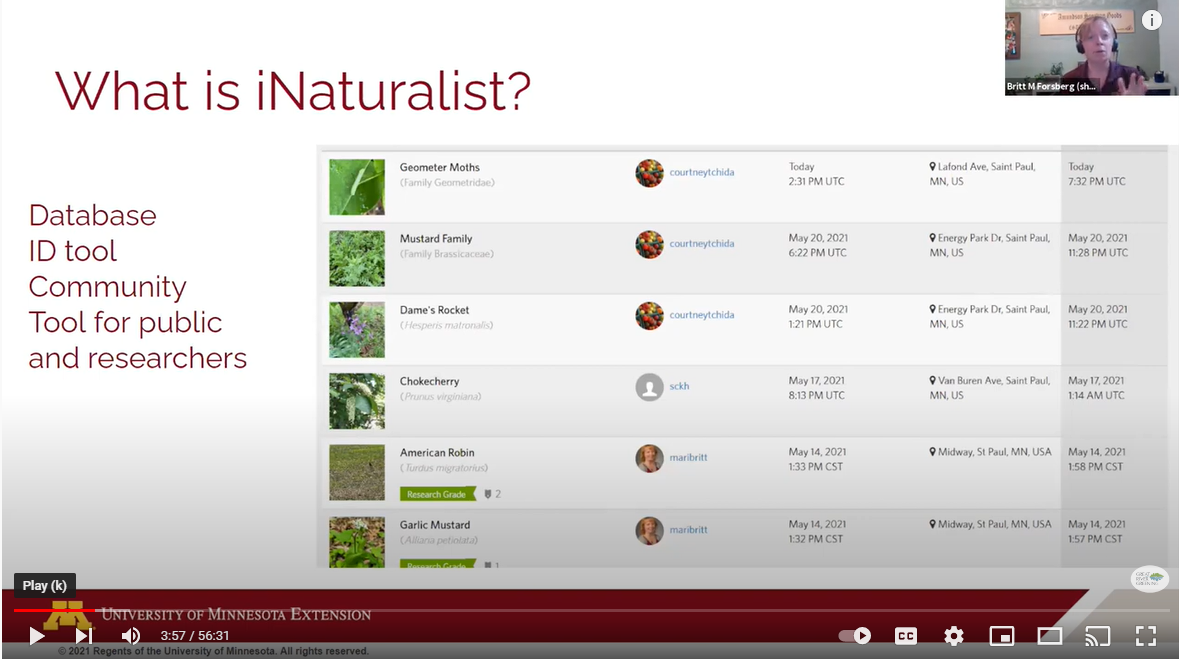iNaturalist Update
Volunteer supervisor uses a smart phone in the field.
We’ve probably all had that moment when we see a plant, insect, or critter while out and about and we wonder “Hm… what is that?” If you’ve got a smartphone with you, you can use the free app iNaturalist to identify what you saw. iNaturalist puts nature at your fingertips by using its network of over 5 million members to crowdsource species identifications.
Great River Greening’s Twin Cities Metro program manager and ecologist Becca Tucker describes iNaturalist, “It’s like Pokémon GO for nature.” You can snap a photo, get recommendations on species identification, track data, and be a citizen scientist. Our amazing network of volunteers can make observations and contribute to Great River Greening’s iNaturalist profile.
Great River Greening staff member identified Dame’s rocket (an invasive species) in a neighborhood park.
If you’re looking for a flexible, independent volunteer opportunity you can join iNaturalist and help our team of ecologists monitor our ongoing restoration efforts at project sites including:
Lebanon Hills Regional Park, Eagan, MN
Lilydale Regional Park, Saint Paul, MN
Allemansratt Wilderness Park, Lindstrom, MN
Quarry Park, Waite Park, MN
Carroll's Woods/Schwarz Pond, Rosemount, MN
Sunktokeca Creek Wildlife Management Area (WMA), near Faribault, MN
Dora Lake WMA, near Kilkenny, MN
John Peter Hoffman WMA, near Red Wing, MN
Big Woods Heritage Forest WMA, near Shieldsville, MN
And more to come!
Keep an eye out for updates on how our Pollinator Central projects will be monitored for their success in habitat establishment for bumble bees (and any other species that volunteers identify!).
One of our sites, Lebanon Hills Regional Park, has been a great success with over 536 observations (41 of which are insects alone!) since the project was listed on iNaturalist in February 2021.
A small sampling of the species identified (so far!) at Lebanon Hills Regional Park using iNaturalist.
We look forward to learning more thanks to our network of volunteer citizen scientists.
If you’d like to learn more, check out this introductory blog post or our webinar hosted by our partners at the University of Minnesota Extension below:
Contributors: Julie Baumeister, Becca Tucker.
Funding/Sponsors: National Fish and Wildlife Foundation (NFWF) funding, University of Minnesota Extension




